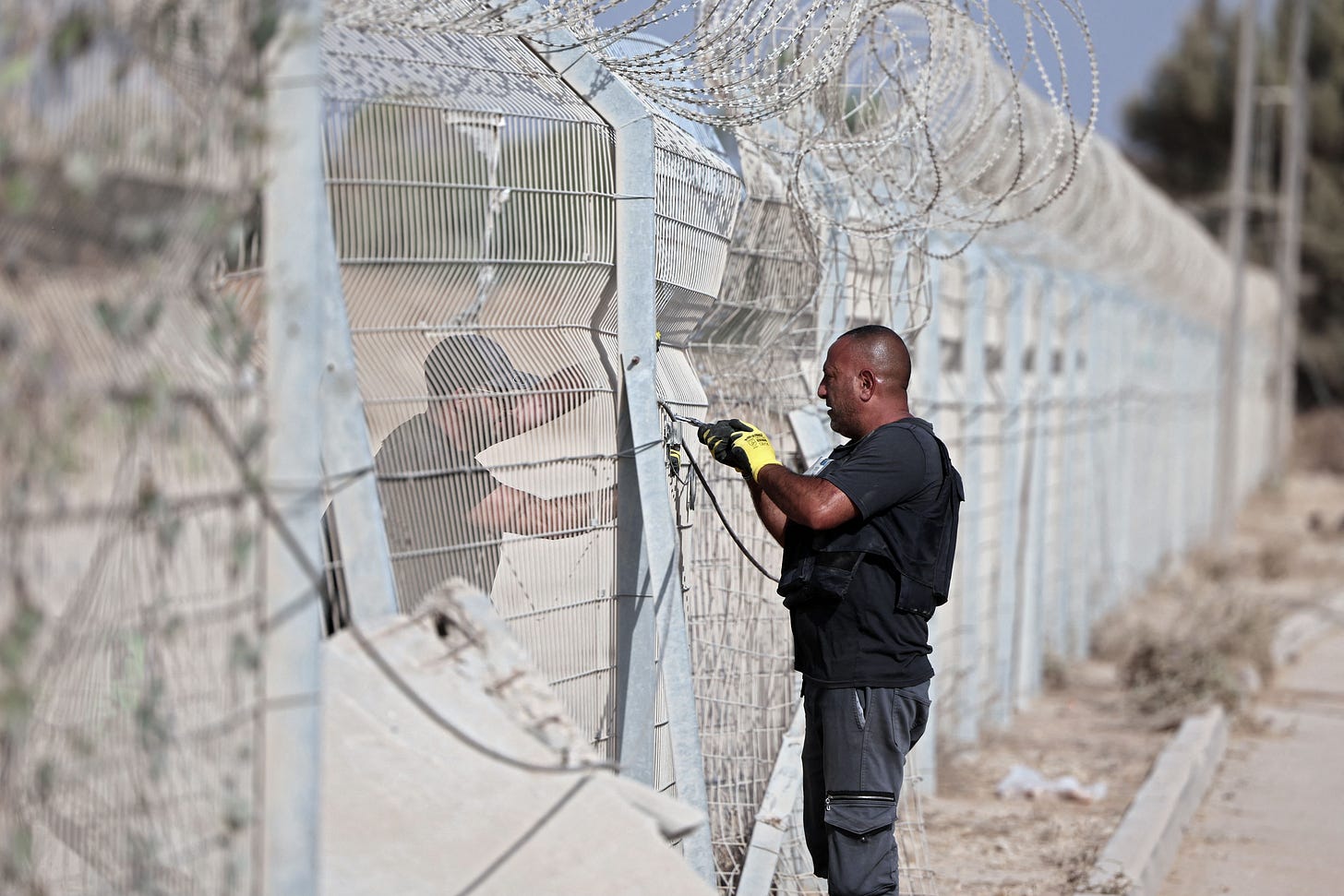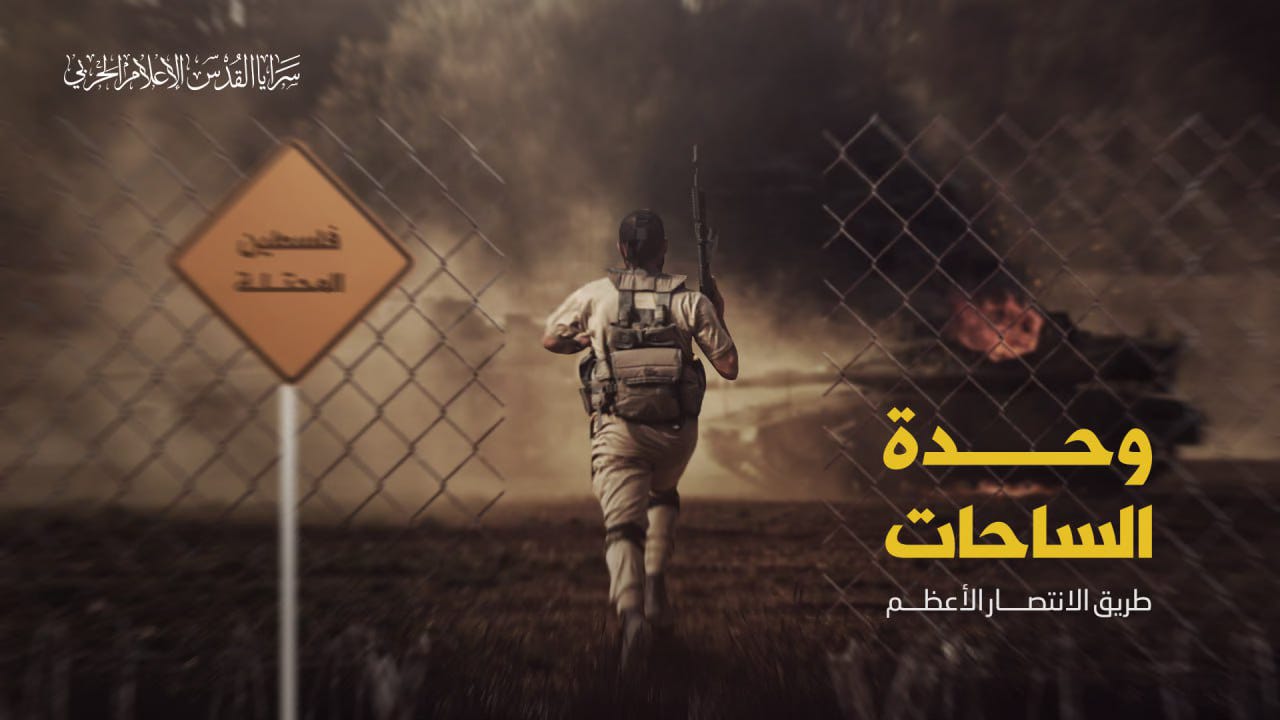Knowing Your Enemy's Propaganda
How the U.S. government can counter the falsehoods of Hamas and others amid the fog of war in Gaza.

The fog of war isn’t just a pithy phrase—something many of us have relearned in the fighting that followed the October 7 terrorist atrocities against Israel committed by Hamas. Initial reports can turn out to be misleading or disastrously wrong. Uncertainty about unclear events gives dishonest actors the opportunity to inject their preferred narratives into the global media bloodstream while the rest of us sift through the available evidence—usually incomplete at best—to determine what, exactly, has happened. That’s what seems to have occurred with the recent Al Ahli hospital blast in Gaza, where too many reporters and political leaders ran with inflammatory assertions of Israeli responsibility for an explosion that, given the facts now at hand, appears to have resulted from an errant Palestinian Islamic Jihad rocket striking cars parked at the hospital.
This erroneous narrative has already had negative repercussions: Jordan called off a planned summit with President Biden and other Arab leaders intended to formulate a more coordinated international humanitarian response to the fighting in Gaza. Mobs across the region descended on American and Israeli embassies due in large part to faulty information spread via social media, whether by actors operating in good faith or bad.
As a media scholar, I teach my students about such campaigns and how to be a smart consumer of social media products. But the most important thing I teach however is a dark art that goes back centuries and remains a critical component of warfare today: propaganda.
Propaganda isn’t a fake news article or a deliberately poor-quality meme, nor is it disinformation or misinformation—though these are all tactics of information warfare. Propaganda is a communication, often a story, geared to a large audience designed to influence perspectives and inspire actions that support the interests and objectives of its creator. Good propaganda works through framing and narrative; it is attractive and even entertaining. It evokes emotion and, if done well, colors the way one sees the world and evaluates a particular situation.
In the weeks since the Hamas terrorist attack on Israel on October 7, we’ve seen propaganda in action.
Broadcast News and the Framing Effect
The first 24 hours of any crisis, especially terrorist attacks, are critical for framing the conflict. Amid the fog of war and its attendant information vacuum, the media has immense power to shape the narrative, telling an information hungry audience what happened, who did what, and who won and who lost. The organizers of the deadly Hamas campaign clearly knew this, as within hours of the attack they were spreading visual evidence of the attack, including through their preferred international news outlet, Al Jazeera.
Al Jazeera is funded by Qatar, a country that hosts Hamas leaders and serves as the main international interlocutor between Hamas-run Gaza and the rest of the world. (Doha does like to cover its bets, though: U.S. military’s largest air base in the Middle East is in Qatar.) When other international television broadcasters were only beginning to cover the story, Al Jazeera was airing exclusive on the ground footage, with perhaps the earliest and most iconic being a video of a captured Israeli tank with Palestinians exalting around it.
While its English service normally attempts to project a modicum of neutrality, Al Jazeera’s Arabic service, which claims reaches 1.4 billion people, apparently has no such qualms. It demonstrated quite the opposite following the Hamas atrocities, airing a video montage of the attack accompanied by a female voiceover that praised the fighters and showcased the destruction they wrought. It was a classic case of state sponsored bullshit that has to be seen to truly be believed. (The Middle East Media Monitoring Institute has a translated recording from October 7. The day of the attack; an English version aired on October 8.)
Meanwhile, there was a dearth of information coming from the Israeli side—an information vacuum that Hamas happily filled and exploited. Such relative silence is understandable, as the government and Israeli society was still in crisis mode, struggling to understand the situation and mobilize troops to respond to the attacks on Israeli communities and military assets.
Still, details about the scale and brutality of the attack did not make it to international television airwaves for at least 24 hours, at which time Israel had already begun bombing Gaza. Whether a happy surprise for Hamas or calculated outcome, this meant that the reality of the Hamas terrorism was overshadowed by images of bombed out buildings and accounts of Palestinian suffering. Israel has since challenged this frame, in large part by showing the world the unimaginable horrors of the Hamas attack and posting detailed daily updates about its military campaign on social media. Still the frame of Israel as aggressor and not victim, primed in some audiences for years, was set for many around the world.
The Propaganda of Palestinian Islamic Jihad
Good propaganda tells a story about violence, framing its contours and identifying its protagonists and antagonists. The best content tells this story in a way that appeals to and motivates a disparate audience, one with different cultural contexts and language. The propaganda efforts of Palestinian Islamic Jihad (PIJ) in the first 72 hours of the crisis are a case in point.
Created in 1979 and possessing close ties to Hamas, Hezbollah, and the Iranian regime, PIJ is a small group relative to other Palestinian militant factions. It participated in the Hamas-led incursion, providing weapons and elite fighters; PIJ says it has 30 of the more than 220 hostages taken during the attack.
PIJ proved an adept and speedy propaganda producer early on. It took the clips from Hamas and its own fighters and mashed it up in visually striking ways. A cinematic score accompanied raw and professional footage in short videos that told the story of the initial attack and its assailants. Flipping the usual narrative of Palestinians as oppressed, PIJ propaganda conveyed a sense of Palestinian strength and heroism, shattering what Al Jazeera called Israel’s “iron grip.”

One PIJ video shows a command center with monitoring equipment and uniformed officers. Another shows fighters moving through a fortified tunnel flanked by missiles. A third shows fighters kicking down doors and firing, a woman cringing away from her attackers and an elderly man on his knees. Some of the videos could have been produced ahead of time, but many use raw footage from the fighter’s perspective, much like a first-person shooter video game. There is no dialogue, which suggests that these videos are meant for a wider audience, beyond Arabic speaking populations. These powerful media products continue to circulate, with PIJ’s Telegram channels posting new ones almost daily.
Towards an American Response
The United States has made it clear that it stands with Israeli in its fight against Hamas and has and will continue to support its military offensive, providing it arms, ammunition, and other resources. The U.S. has also indicated that it will not put limitations on what Israel can and cannot do with this aid. This self-imposed restriction, coupled with the chaos in Congress, means that U.S. policy options in the near future are limited. Luckily, there are things the Biden administration can do on the public communications front right now.
Raise awareness of the problem of state backed media pushing Hamas propaganda. The U.S. should call out Al Jazeera for pushing the Hamas propaganda and its framing. At the very least, the U.S. should criticize the outlet for not adequately reporting on Hamas’ atrocities. Increased media and international scrutiny may compel Al Jazeera to be more circumspect about how it “reports” on the crisis and Hamas’ role in it, at least temporarily. This strategy should be applied to other state-backed outlets such as those from Iran and Russia.
When it comes to Hamas, PIJ, and others, both show and tell. Most people probably don’t know that such polished PIJ propaganda exists, let alone that it proliferates like wildfire. The United States should tell them. American diplomats should go into detail, explaining what the terrorist-cum-propagandists are saying, how they are saying it, and who the messages are designed to reach. Doing so will raise awareness about the problem and may even help inoculate likely targets against it.
Pre-bunk Hamas lies. When errant PIJ rocket landed in a hospital parking lot last week, Hamas propagandists took to television and social media to blame Israel, claiming the missile blew up the hospital killing hundreds of people. We now know that Hamas’ story was false—and yet, despite all the evidence to the contrary, people still believe it in whole or in part. Unfortunately, there is little Israel or the U.S. can do to change the narrative of this incident. What they can do, however, prepare people for how Hamas will seek to manipulate them in the future. By forecasting its tactics, people will be more likely to view Hamas’ narrative with a critical eye.
As we continue to watch developments in what Israeli Prime Minister Benjamin Netanyahu has promised to be a “long and difficult war,” it’s important to understand that this is not just a war on the ground. It is a war of images, narrative, and frames. It is a war of media manipulation, dis- and misinformation, and outright lies.
Using real footage, dramatic staged situations, and ominous music, the PIJ has crafted propaganda products that speak to the angry and disenfranchised, to those who are anti-Israel and anti-Semitic, to the current and prospective terrorist-cum-freedom fighter, offering empowerment and revenge through violence.
Meanwhile, terrorist actors use powerful news channels to influence the way people understand the conflict and their part in it. This information dynamic is a danger to Israel and its ability to achieve its stated objectives in Gaza while protecting its people at home. It is also a national security challenge for America, home to approximately seven million Jews and Israel's most powerful ally. The October 7 attack could embolden state and non-state actors to hit Israel on other fronts and even inspire terrorism here in America.
The ancient Chinese military strategist Sun Tzu famously advised his students to “know thy enemy.” To beat Hamas and PIJ, we must know—and fight—its propaganda.
Dr. Emily L. Blout is a Senior Research Fellow at the International Institute for Counter-Terrorism at Reichman University in Israel and author of Media and Power in Modern Iran: Mass Communication, Ideology, and the State (IB Tauris/Bloomsbury, 2023). She holds a Ph.D. in Iranian Studies from the University of St Andrews and teaches courses on propaganda and digital influence at Georgetown University. Follow her @emilyblout and www.emilyblout.com.


